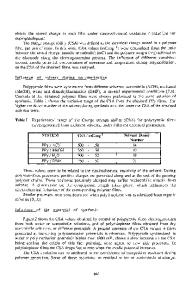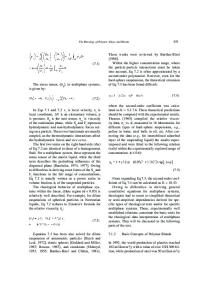Ants Inspire Algorithm for the Design of Conducting Polymer Alloys
- PDF / 201,050 Bytes
- 2 Pages / 576 x 783 pts Page_size
- 69 Downloads / 338 Views
Defect Transition Can Enhance Band-Edge Emission in Semiconductor Nanocomposites Defects are usually considered a big disadvantage in solid-state emitters because they reduce the quantum efficiency of bandgap emission. However, researchers at National Taiwan University have found that coating a layer of CdSe/ZnS core–shell nanoparticles can convert the defect loss into bandgap emission in ZnO nanorods. The bandgap emission of ZnO nanorods can be enhanced as much as 30 times. The possible mechanism is based on the resonance effect between defect transition and band-to-band excitation and the transfer of excited electrons between conduction band edges. In the March 15, 2008, issue of Optics Letters (DOI: 10.1364/OL.33.000569, p. 569), L.-J. Tzeng, C.-L. Cheng and Y.-F. Chen reported preparing ZnO nanorods on the surface of gold-coated sapphire using a mixture of high-purity ZnO and carbon powders by a vapor– liquid–solid process. The nanorods were well aligned and had an average diameter of 50 nm and a length of about 1 µm. The researchers used a sol-gel process to synthesize CdSe/ZnS core–shell quantum dots. First, CdSe cores were made using CdO and Se precursors in stearic acid at 320°C in the presence of trioctylphosphine oxide and hexadecylamine. Then, the researchers used diethylzinc and hexamethyldisilathiane as the Zn and S precursors to form a ZnS shell on the CdSe cores. Finally, the core–shell quantum dots dissolved in methylbenzene were spin-coated onto the ZnO nanorods. After the preparation, the researchers used a spectrometer equipped with a He-Cd (325 nm) laser source, a Spex 0.85 m double-grating monochromator, and a cooled photomultiplier tube to obtain the photoluminescence spectra of pure ZnO nanorods and CdSe/ZnS quantum dots, and the composite of ZnO nanorods coated with CdSe/ZnS quantum dots. They found that the weak bandgap emission of ZnO nanorods at 380 nm is enhanced in the composite, while the emission of CdSe/ZnS quantum dots at 570 nm is reduced. This indicates that energy is transferred from CdSe/ZnS quantum dots to the ZnO nanorods where it is converted into the bandgap emission. The researchers concluded that the defect emission at 540 nm should be in resonance with the bandgap excitation of the quantum dots to obtain the most efficient energy conversion. When they prepared samples coated with core–shell CdSe/ 492
ZnS quantum dots prepared such that the defect transition in the ZnO nanorods was in resonance with the bandgap excitation of the CdSe/ZnS quantum dots, the bandgap emission of the ZnO nanorods was enhanced by more than a factor of 30 and the bandgap emission of the CdSe/ZnS quantum dots was greatly reduced. The researchers believe that the enhancement involves a mechanism similar to fluorescence resonant energy transfer between the ZnO defect transition and the band-to-band transition in the CdSe quantum dots. This approach can become a general strategy for the design of many other nanocomposites with enhanced photoluminescence at the bandgap wavelengths. ZHAOYONG SUN
Reso
Data Loading...











